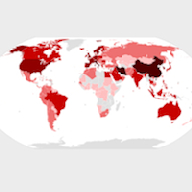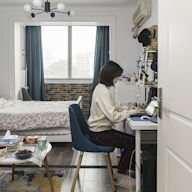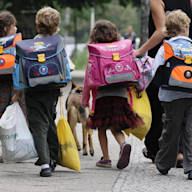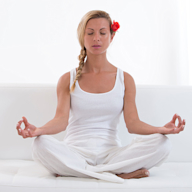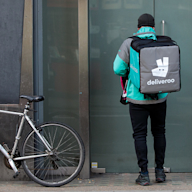Search results
See our breakdown of coronavirus lockdowns and stay-at-home orders by state to help you figure out how much room you have to move. What each state is doing — or not doing — amid widespread...
- Overview
- 1. What does a stay-at-home order mean?
- 2. What is the purpose of a stay-at-home order?
- 3. What kind of things can I do when there is a stay-at-home order?
- 4. What kind of things can I not do when there is a stay-at-home order?
- 5. How long might an order have to remain in effect?
- 6. Are there things I should be stocking up on?
- 7. What can I do to protect myself when I leave home?
- 8. Do I need to practice social distancing while I am home?
- 9. What if my state has not yet issued an order?
•On March 16, 2020, the U.S. government announced a set of guidelines intended to slow the spread of COVID-19.
•Individual states have now begun to issue stay-at-home orders as well.
•Stay-at-home orders restrict people from leaving their homes for anything other than essential activities.
•They’re intended to limit people’s contact with each other in order to slow the spread of the disease.
•Slowing the spread of COVID-19 will prevent hospitals from becoming overwhelmed with more cases than they can handle.
As of March 24, 2020, the Centers for Disease Control and Prevention (CDC) states that there have been 54,453 reported cases of COVID-19 within the United States and its territories.
According to Brian Labus, PhD, MPH, an assistant professor in the School of Public Health at the University of Nevada, Las Vegas, a stay-at-home order means you should remain at home and away from other people unless it’s absolutely necessary to go out.
“We want people to stay at home as much as possible, but make exceptions to go out for medical care, food, and essential work,” explained Labus.
Although some have been calling it a shelter-in-place order, this isn’t actually the case, Labus said.
A shelter-in-place order would mean that you couldn’t go out for any reason due to an immediate threat to your life and safety.
“If you do not follow a shelter-in-place order, you put your life at risk.
“If you do not follow a stay-at-home order, you put the community at risk in addition to yourself,” he said.
According to Aline M. Holmes, DNP, RN, clinical associate professor and director, Clinical Systems Project, Rutgers University School of Nursing, the purpose of a stay-at-home order is to limit how many people are exposed to the virus.
“If we allowed everyone to go about their business as usual, most everyone would come in contact with the virus,” said Holmes. “Of those, about 80 percent would get pretty sick, and of those, about 20 percent will need to be hospitalized.”
Using her own state of New Jersey as an example, Holmes noted that it has a population of around 8.9 million people. If 80 percent got sick and 20 percent of those needed hospitalization, New Jersey’s healthcare system would become overwhelmed.
“By restricting the number of folks exposed to the virus at any one time, we can spread the number of cases over a longer length of time — hopefully enough time to manage staffing and resources better,” said Holmes.
Labus said you can still do essential activities like getting medical care and shopping for food, medicine, and supplies.
In addition, gas stations and mechanics are open, as well as essential services such as banks, the post office, and shipping companies.
Gyms and public pools will also be closed during this time, but going out for a walk or run where you aren’t around other people is fine.
If you work in a business that’s considered essential, you may still go to work.
Labus said the main thing you shouldn’t be doing is gathering with other people when there isn’t an essential need to do so.
Activities like parties, visiting entertainment venues, or dining out will all have to be postponed, he said, although you can still take food to go or have it delivered to your home.
Labus said that right now we don’t really know how long a stay-at-home order might have to remain in effect.
“It all depends on how well people follow the stay-at-home orders and how the outbreak responds.”
Holmes suggested stocking up on frozen and canned fruits and vegetables, bread, pasta, frozen meals, meats, and fish, and limiting visits to the grocery store for perishables like milk, eggs, and fresh fruits and vegetables.
You can also check into having your food delivered by Peapod, Amazon, or a local grocery store, she said.
However, Labus added, it isn’t necessary to hoard toilet paper, water, or food.
“Stores will continue to remain open and our food supply is intact, so there is no reason to buy several months’ worth of food.
The CDC recommends that all people wear cloth face masks in public places where it’s difficult to maintain a 6-foot distance from others.
This will help slow the spread of the virus from people without symptoms or people who do not know they have contracted the virus.
Cloth face masks should be worn while continuing to practice physical distancing. Instructions for making masks at home can be found here.
Note: It’s critical to reserve surgical masks and N95 respirators for healthcare workers.
Was this helpful?
Holmes said the goal is to avoid inhaling any droplets containing the virus in the event that someone near you sneezes or coughs.
“This is not the time to visit with the neighbors or your family friends,” said Labus.
“You should not be having gatherings at your house, and you need to keep your distance from people outside your household as much as possible.”
However, within your own home, you can’t really avoid contact with the people who live with you.
You do, however, want to pay special attention to older family members and those with high risk medical conditions to avoid spreading the disease to them if you do become sick.
“It’s hard to imagine that any state will not wind up with an order in the very near future,” said Labus, “as we are seeing the same spread throughout the country. Some states just had their spread earlier than others.
“We know this disease is circulating,” he added, “so it makes sense to take steps to keep you and your family safe even before an order is issued.”
People also ask
Which states have a stay-at-home order?
What is a mandatory stay-at-home order?
What is a stay-at-home order in New York?
What is a stay-at-home order?
Mar 23, 2020 · Mayor Muriel Bowser has issued a stay-at home order that directs residents to stay at home except for essential activities, such as grocery shopping or obtaining medical care.
Sep 3, 2020 · Mandatory stay-at-home orders can help reduce activities associated with community spread of COVID-19, including population movement and close person-to-person contact outside the household.
- Amanda Moreland, Christine Herlihy, Michael A Tynan, Gregory Sunshine, Russell F McCord, Charity Hil...
- 2020
Mar 24, 2020 · In a handful of more rural states — Arkansas, Iowa, Nebraska, North Dakota and South Dakota — governors held off on imposing stay-at-home orders, favoring other restrictions amid intense...
Jun 3, 2020 · Arkansas, Iowa, Nebraska, North Dakota, South Dakota, Oklahoma, Utah, and Wyoming never issued statewide stay-at-home orders, though many non-essential businesses closed in most of...
Apr 4, 2020 · Statewide Stay-at-Home Orders: State: Date Announced: Effective Date: Alabama: April 3: April 4: Alaska: March 27: March 28: Arizona: March 30: March 31: Arkansas – – California: March 19...

